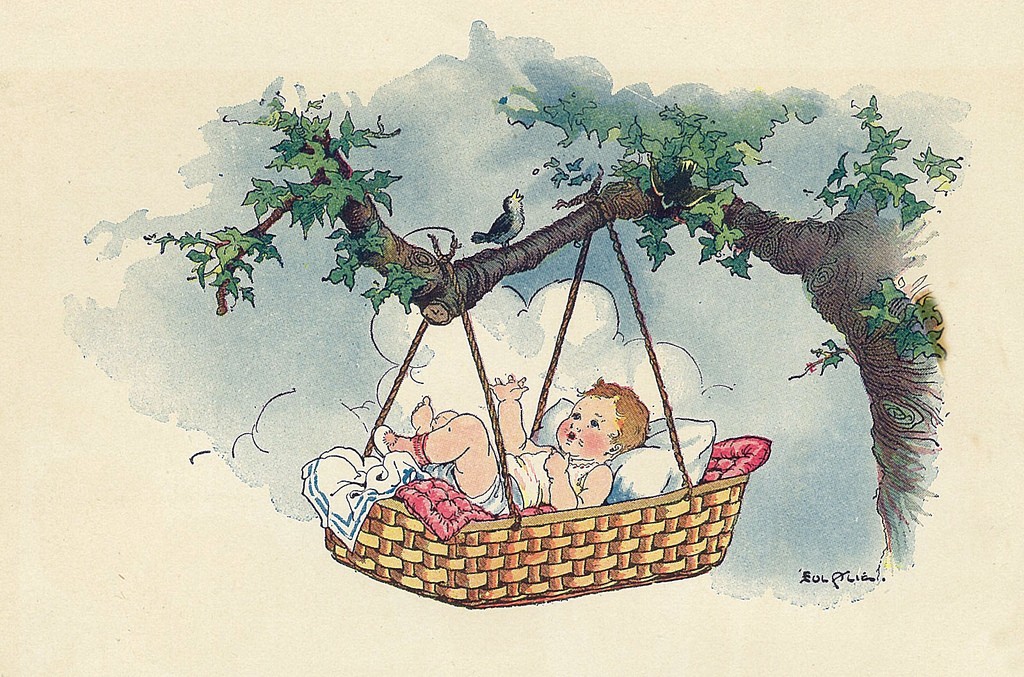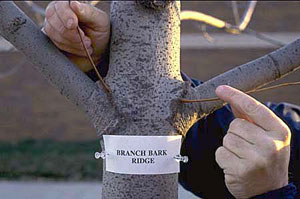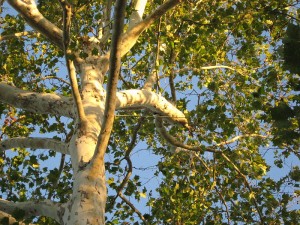When the bough breaks: a cautionary tale

Illustration: Eulalie, from Mother Goose Rhymes and Nursery Tales
From my (age-wise, at least) adult perspective, the nursery rhymes that came out of Western Europe, especially England, give me the creeps. As kids we sang “Ladybird, ladybird, fly away home, your house is on fire, your children shall burn!” without a thought to the fate of the poor insects. But suffering was not limited to ladybugs.
For example, we were told that when the old woman who lived in a shoe had so many children she didn’t know what to do, she gave them some broth without any bread, then whipped them all soundly and put them to bed. The next verse should have been about Child Protective Services, but instead is even worse. If that was the norm in Old England, it is no wonder the Pilgrims were in such a hurry to leave.
Although the origins of many nursery rhymes are hotly debated by people with way too much time on their hands, we may have a home-grown lullaby that is at first glance just as abusive as the imports. Consider the one about leaving a baby in a cradle to rock in a treetop, only to have the limb break and the cradle fall. (The bizarre thing is that parents thought this would help their kids fall asleep.)
An old friend, Abenaki author and storyteller Joe Bruchac, once told me that a traditional Abenaki lullaby is likely the basis for the “Rock-a-bye-baby” rhyme. That version, though, has the baby rocking in the tree, with no ensuing tragedy. It was common for many First Nations peoples to strap infants into a cradle board, then affix the cradle board to a tree branch or trunk while the adults worked nearby. This gave the child an adult-eye perspective of the world, and kept the child within view.
Undoubtedly the Abenaki, Iroquois and others who used this practice had the tree examined by an arborist to make sure the limb was in good shape. No one can predict breakage with certainty, but a trained eye can spot most potential failures. Once the leaves are off, it is easier to evaluate a tree’s structure, so late fall and winter are ideal times to check out the hazard potential of the trees on your property.

Codominant leader with included bark = poor form and potential hazard. Photo: Gary R. Johnson, Univ. of Minnesota Extension
A critical factor that predisposes a tree to wind damage is weakness in major unions or forks (known as crotches before the advent of PC). The way a branch is attached to the trunk can be a good indication of strength, or lack thereof. But limbs are not the only place trees can break. Failure of a large trunk-to-trunk union can be catastrophic, both for the tree as well as for people or structures beneath it. Luckily, most weak unions can be remedied once they are identified.

This branch bark ridge indicates strong branch attachment. Photo: Gary R. Johnson, Univ. of Minnesota Extension
It’s fortunate that unions provide clues as to their strength. The first is the angle of attachment. Unions close to ninety degrees tend to be strongest, while narrower ones are weaker. A tree with a narrow fork between two (“codominant”) trunks that lean out away from each other is more at risk of splitting than such a tree where its codominant trunks are upright.
The next clue is the presence of seams—cracks running down the trunk from the union. A crack on both sides of the trunk implies a far weaker situation than does a single seam. Decay is an important clue, but the problem is that it is not always evident. Obviously, conks (shelf fungi) and woodpecker activity indicate serious rot, and it should go without saying that having a little “garden” of brambles and saplings growing in the fork also means extensive decay.
One of the clearest signs of weakness is a pair of ears on a fork. I should probably explain. Trees are self-optimizing; that is, they respond to stress by adding tissue in ways appropriate to the problem. The weaker a union, the more a tree compensates by adding wood, in this case outward from the trunk in a sort of “ear” or “clam shell” shape.

Cable bracing added to stabilize the forks. Photo: Bill McChesney, Creative Commons, some rights reserved
Finding one of these clues is enough to warrant professional advice, and if you see more than one sign, make it soon. So long as a tree is in generally good condition, even the weakest union can usually be stabilized with a cable brace two-thirds to three-quarters the way to the top from the union. Because a mature shade tree is irreplaceable in one lifetime, and because it’s a slight inconvenience to have a large portion of one “drop in” on you suddenly, cabling is worth it.
Every component in a cable system is load-rated, and sized differently for each situation. With all due respect to the capable “DIY” crowd out there, the wrong cable is worse than no cable. Cabling should only be done by someone familiar with the American National Standards Institute (ANSI) published standards for cable bracing. This is an important point; not all tree care professionals are up to snuff on ANSI standards.
The take-home message is that in most cases, breakage-prone limbs and trunks can be identified ahead of time, and pruned or cabled to help prevent failure. And that infants should probably not be left unattended in trees, or exposed to nursery rhymes.
Tags: arborist, forestry, tree surgery






